
Sir Alfred Joseph Hitchcock was an English film director. He is widely regarded as one of the most influential figures in the history of cinema. In a career spanning six decades, he directed over 50 feature films, many of which are still widely watched and studied today. Known as the "Master of Suspense", Hitchcock became as well known as any of his actors thanks to his many interviews, his cameo appearances in most of his films, and his hosting and producing the television anthology Alfred Hitchcock Presents (1955–65). His films garnered 46 Academy Award nominations, including six wins, although he never won the award for Best Director, despite five nominations.

The Lodger: A Story of the London Fog is a 1927 British silent thriller film directed by Alfred Hitchcock and starring Marie Ault, Arthur Chesney, June Tripp, Malcolm Keen and Ivor Novello. Hitchcock's third feature film, it was released on 14 February 1927 in London and on 10 June 1928 in New York City. The film is based on the 1913 novel The Lodger by Marie Belloc Lowndes and the play Who Is He? co-written by Belloc Lowndes. Its plot concerns the hunt for a Jack the Ripper-like serial killer in London.
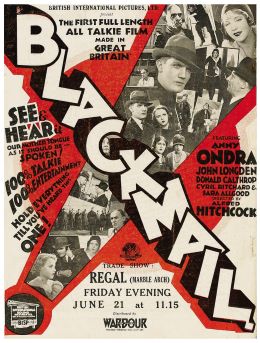
Blackmail is a 1929 British thriller directed by Alfred Hitchcock and starring Anny Ondra, John Longden, and Cyril Ritchard. Based on the 1928 play of the same name by Charles Bennett, the film is about a London woman who is blackmailed after killing a man who tries to rape her.

The following is a partial list of unproduced Alfred Hitchcock projects, in roughly chronological order. During a career that spanned more than half a century, Alfred Hitchcock directed over fifty films, and worked on a number of others which never made it beyond the pre-production stage.
Henry Cecil Leon, MC, who wrote under the pen-names Henry Cecil and Clifford Maxwell, was British barrister, judge, and a writer of fiction about the British legal system.

Jay Presson Allen was an American screenwriter, playwright, and novelist. Known for her withering wit and sometimes off-color wisecracks, she was one of the few women making a living as a screenwriter at a time when women were a rarity in the profession.

The Wreck of the Mary Deare is a 1959 Metrocolor British-American thriller film directed by Michael Anderson and starring Gary Cooper and Charlton Heston, and featuring Michael Redgrave, Cecil Parker, Richard Harris and John Le Mesurier. The screenplay by Eric Ambler was based on the 1956 novel of the same name by Hammond Innes.

Tour de Force is a 1955 mystery crime novel by the author Christianna Brand. It was the sixth novel in a series featuring the fictional police detective Inspector Cockrill. It was the last full-length novel in which Cockrill appears, although he features in some short stories. His sister Henrietta also features in the 1957 novel The Three Cornered Halo which uses the same setting as this work. Additionally, the minor character Mr Cecil from Death in High Heels (1941) appears in a more prominent role.

Alibi for a Judge is a 1960 comedy crime novel by the British writer Henry Cecil. After sentencing a man to serve ten years in prison, a worrisome judge becomes concerned that the alibi provided by his wife may in fact be true.
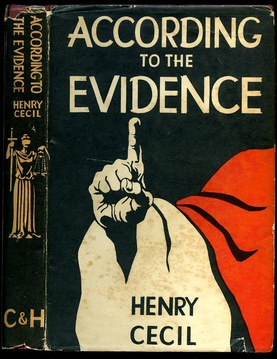
According to the Evidence is a 1954 comedy crime novel by the British writer Henry Cecil. An ex-army officer and a former criminal join forces to make sure that the man who killed a murderer is acquitted of murder himself.

Natural Causes is a 1953 comedy crime novel by the British writer Henry Cecil. It was his fourth novel. As with most of his work it combines Wodehousian humour with a potentially major crime theme.

Friends at Court is a 1956 comedy novel by the British writer Henry Cecil. It was published in the United States the following year by Harper Publications. It is a sequel to his bestseller Brothers in Law. Roger Thursby, the hero of the original novel, is now flourishing in the legal profession and has hopes of soon being made a Queen's Counsel. It was followed in 1962 by a third book in the series Sober as a Judge.

A Penknife in My Heart is a 1958 crime thriller novel by Cecil Day-Lewis, written under the pen name of Nicholas Blake. It was one of four stand-alone novels he wrote alongside the Nigel Strangeways detective novels.

The Second Man is a 1956 crime novel by the British writer Edward Grierson. It won the Gold Dagger award of the Crime Writers' Association.
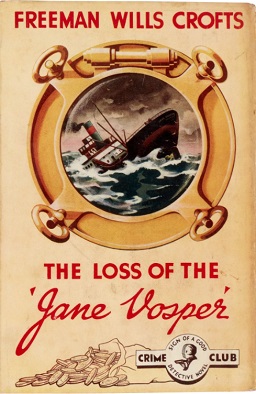
The Loss of the Jane Vosper is a 1936 detective novel by Freeman Wills Crofts. It is the fourteenth in his series of novels featuring Inspector French, a Scotland Yard detective of the Golden Age known for his thorough technique. It particularly dwells on the process of police procedure.
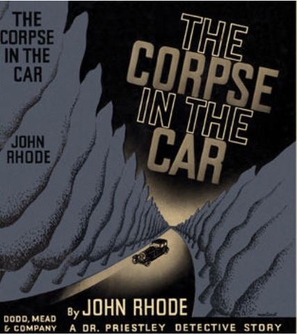
The Corpse in the Car is a 1935 detective novel by John Rhode, the pen name of the British writer Cecil Street. It is the twentieth in his long-running series of novels featuring Lancelot Priestley, a Golden Age armchair detective. A review by Ralph Partridge in the New Statesman commented "Mr. Rhode has written a humdrum, workaday book in The Corpse in the Car. He belongs to the English school of Freeman Wills Crofts, with which it is impossible to find technical fault." In The Spectator Rupert Hart-Davis considered that "The Corpse in the Car is greatly inferior to his last book, Shot at Dawn."
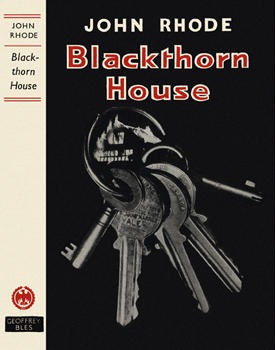
Blackthorn House is a 1949 detective novel by John Rhode, the pen name of the British writer Cecil Street. It is the forty eighth in his long-running series of novels featuring Lancelot Priestley, a Golden Age armchair detective.

A Village Afraid is a 1950 detective novel by the British writer Cecil Street, writing under the pen name of Miles Burton. It was part of a lengthy series of books featuring the detective Desmond Merrion and Inspector Arnold of Scotland Yard.

The Case with Nine Solutions is a 1928 detective novel by the British writer Alfred Walter Stewart, published under his pseudonym J.J. Connington. It is the forth in his series of novels featuring the Golden Age Detective Chief Constable Sir Clinton Driffield. It was published in London by Gollancz and the following year in Boston by Little, Brown and Company.

Greek Tragedy is a 1939 detective novel by the British authors G. D. H. Cole and Margaret Cole. A husband and wife writing team, it was part of their series of novels featuring Superintendent Wilson, one of the many investigators of the Golden Age of Detective Fiction. It was published by the Collins Crime Club. It is set in Greece during the rule of Ioannis Metaxas. Written in peacetime, a year after its publication the Italian invasion of Greece took place, dragging the country into the Second World War.


















